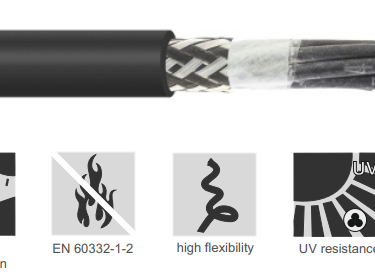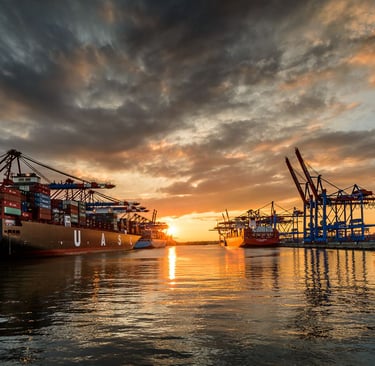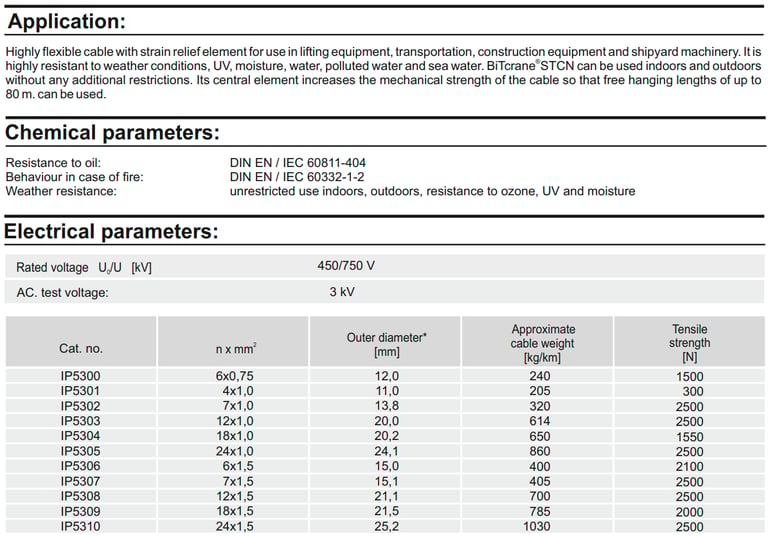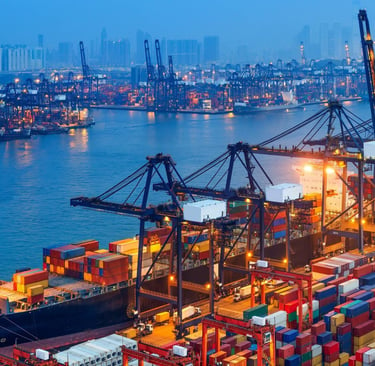📞+86 153 7530 2641 📧 hongjing.Wang@feichuncables.com

Highly Flexible Crane Cable STCN – 80 m Free-Hanging Strain Relief Rubber Cable for Shipyard Machinery
STCN (EMV) highly flexible crane cable with strain relief element offers UV, oil, and seawater resistance, central support for 80 m free-hanging lengths, and compliance with RoHS 2015/863/EU & CPR 305/2011. Perfect for lifting equipment, construction, and shipyard machinery.
hongjing.Wang@Feichun
8/6/20258 min read


In the demanding world of industrial lifting and material handling, cable reliability can mean the difference between operational success and catastrophic failure. The STCN (EMV) cable series represents a pinnacle of engineering excellence, designed specifically for applications where extreme flexibility, environmental resistance, and mechanical strength are non-negotiable requirements. This highly flexible crane cable with its revolutionary strain relief system has become the gold standard for shipyard machinery, construction equipment, and offshore installations worldwide.
Modern industrial environments present unique challenges that standard cables simply cannot address. From the corrosive saltwater spray in shipyards to the extreme mechanical stress of 80-meter free-hanging installations, traditional cables often fail when subjected to the harsh realities of heavy-duty operations. The STCN (EMV) series bridges this gap by combining advanced materials science with innovative design principles, delivering a cable solution that not only meets but exceeds the stringent demands of today's most challenging applications.
The importance of selecting the right cable for crane and lifting operations cannot be overstated. Equipment downtime, safety risks, and replacement costs associated with cable failures can quickly escalate into significant operational and financial burdens. By understanding the unique advantages and specifications of the STCN (EMV) cable, facility managers, engineers, and procurement specialists can make informed decisions that ensure long-term reliability and cost-effectiveness.


Key Features and Benefits
Central Strain Relief Support Element
The most distinctive feature of the STCN (EMV) cable lies in its innovative central strain relief element, a textile or aramid-based support system that fundamentally changes how the cable handles mechanical stress. This central support element enables the cable to maintain structural integrity over free-hanging lengths of up to 80 meters, a capability that far exceeds conventional cable designs.
The strain relief element works by distributing mechanical loads throughout the cable's structure rather than concentrating stress on individual conductors or the outer sheath. This distributed load approach significantly reduces the risk of conductor breakage, insulation damage, and premature cable failure. In practical terms, this means that cranes, hoists, and lifting equipment can operate with longer cable runs without intermediate support points, reducing installation complexity and maintenance requirements.
The enhanced mechanical strength provided by this central element translates directly into operational benefits. Equipment operators can achieve greater lifting heights and working radii while maintaining confidence in cable performance. This is particularly crucial in shipyard applications where large vessels and heavy components require extensive crane reach and lifting capacity.
Material Specifications
The STCN (EMV) cable construction employs carefully selected materials that work in harmony to deliver exceptional performance. The conductors consist of plain copper wires manufactured to class 6 specifications according to DIN EN/IEC 60228 standards. This classification ensures maximum flexibility while maintaining excellent electrical conductivity, making the cable ideal for applications requiring frequent flexing and movement.
The insulation system utilizes EPR (Ethylene Propylene Rubber) compound type 3GI3, conforming to DIN VDE 0207-20 specifications. This advanced insulation material provides superior electrical properties while maintaining flexibility across a wide temperature range. The core identification system varies based on the number of conductors: cables with five cores or fewer feature color-coded identification with a green/yellow protective conductor, while cables with six or more cores use black conductors with numerical identification and a separate green/yellow protective conductor.
The outer sheath employs a specialized rubber compound type 5GM3, manufactured according to DIN VDE 0207-21 standards. This formulation provides exceptional resistance to oil, ozone, and UV radiation while maintaining flame retardant properties. The black outer sheath with white imprinting ensures clear identification and professional appearance in industrial environments.
Environmental Resistance
The STCN (EMV) cable's environmental resistance capabilities set it apart from conventional industrial cables. The UV resistance allows for unrestricted outdoor use without degradation from solar radiation, a critical feature for shipyard cranes and construction equipment that operate in exposed conditions. The ozone resistance ensures long-term performance in industrial environments where ozone-generating equipment may be present.
Oil resistance, verified through DIN EN/IEC 60811-404 testing, makes the cable suitable for use in hydraulic systems and environments where petroleum-based lubricants are present. This resistance extends to various industrial fluids commonly encountered in heavy machinery applications.
Perhaps most importantly for maritime applications, the cable demonstrates excellent resistance to both fresh and seawater. This capability ensures reliable performance in shipyards, offshore platforms, and marine construction projects where salt spray and direct water contact are inevitable. The moisture resistance prevents water ingress that could compromise electrical performance or accelerate cable degradation.
Compliance and Standards
The STCN (EMV) cable meets stringent international standards that ensure both safety and performance. RoHS 2015/863/EU compliance guarantees that the cable is manufactured without hazardous substances, supporting environmental responsibility and worker safety. This compliance is particularly important for companies operating under strict environmental regulations or pursuing green building certifications.
CPR 305/2011 compliance addresses fire safety requirements, ensuring that the cable meets European standards for construction products. This certification is essential for installations in buildings and structures where fire safety is a primary concern.
The EN 60811-404 certification specifically validates the cable's oil resistance properties through standardized testing procedures. This third-party verification provides confidence that the cable will perform as specified in oil-contaminated environments.
Product Variants and Electrical Data
The STCN (EMV) series offers a comprehensive range of configurations to meet diverse application requirements. Available variants include conductor counts ranging from 4 to 24 cores, with cross-sectional areas of 0.75 mm², 1.0 mm², and 1.5 mm². This variety ensures that engineers can select the optimal cable configuration for their specific voltage, current, and signal transmission requirements.
Each variant is identified by a unique catalog number, from IP5300 through IP5310, with specific electrical and mechanical characteristics. For example, the IP5300 variant features 6×0.75 mm² conductors with a 12.0 mm outer diameter, 240 kg/km approximate weight, and 1500 N tensile strength. At the other end of the spectrum, the IP5310 variant offers 24×1.5 mm² conductors with a 25.2 mm outer diameter, 1030 kg/km weight, and 2500 N tensile strength.
The outer diameter tolerance of ±5% provides manufacturing flexibility while ensuring compatibility with standard cable management systems and connectors. The tensile strength ratings, ranging from 300 N to 2500 N depending on the variant, demonstrate the cable's ability to handle significant mechanical loads in demanding applications.


Applications
Lifting Equipment and Cranes
The STCN (EMV) cable excels in crane applications where long cable runs and frequent movement are required. Tower cranes, mobile cranes, and overhead traveling cranes benefit from the cable's ability to handle 80-meter free-hanging lengths without additional support. The central strain relief element ensures that repeated lifting cycles do not cause premature cable failure, reducing maintenance costs and improving operational reliability.
In container handling operations, where cranes must repeatedly extend and retract over significant distances, the cable's flexibility and durability prove invaluable. The environmental resistance properties ensure consistent performance regardless of weather conditions or exposure to industrial contaminants.
Transportation and Construction Machinery
Construction equipment such as excavators, bulldozers, and specialized lifting machinery often require cables that can withstand harsh environmental conditions while maintaining electrical integrity. The STCN (EMV) cable's resistance to oil, moisture, and mechanical stress makes it ideal for these applications.
In transportation applications, the cable's flexibility allows for use in articulated vehicles and equipment where frequent bending and flexing occur. The UV resistance ensures long-term performance in outdoor storage and operation scenarios.
Shipyard and Offshore Platforms
Maritime environments present some of the most challenging conditions for electrical cables. The combination of saltwater exposure, extreme weather, and heavy mechanical loads requires cables with exceptional performance characteristics. The STCN (EMV) cable's seawater resistance and UV stability make it the preferred choice for shipyard cranes, offshore drilling platforms, and marine construction equipment.
The flame retardant properties of the outer sheath provide an additional safety margin in environments where fire risk is a concern. This is particularly important on offshore platforms where evacuation options may be limited.
Indoor and Outdoor Use Cases
The versatility of the STCN (EMV) cable allows for unrestricted use in both indoor and outdoor environments. Indoor applications benefit from the cable's flexibility and durability, while outdoor applications rely on the environmental resistance properties. This versatility simplifies inventory management and reduces the need for application-specific cable variants.


Installation and Handling
Free-Hanging Installation Guidelines
Proper installation is crucial to realizing the full performance potential of the STCN (EMV) cable. For free-hanging installations up to 80 meters, the central strain relief element must be properly secured at the mounting point to ensure load distribution. The cable should be installed with consideration for wind loads and potential swaying motion that could induce additional stress.
Installation personnel should verify that the mounting hardware is rated for the combined weight of the cable and any dynamic loads that may occur during operation. Proper cable routing should minimize sharp bends and potential abrasion points that could compromise long-term performance.
Bending Radius and Flex Cycles
While the STCN (EMV) cable is designed for high flexibility, adherence to minimum bending radius requirements is essential for optimal performance. The recommended minimum bending radius varies based on the cable diameter and should be calculated according to industry standards. Exceeding the minimum bending radius helps ensure that the internal conductors and insulation are not subjected to excessive stress.
The cable is designed to withstand millions of flex cycles under normal operating conditions. However, the actual flex life will depend on factors such as bending radius, load conditions, and environmental exposure. Regular monitoring of cable performance can help identify potential issues before they result in failure.
Maintenance and Inspection Recommendations
Regular inspection of the STCN (EMV) cable should focus on visual examination of the outer sheath for signs of abrasion, cracking, or environmental damage. Electrical testing can verify conductor continuity and insulation integrity. Any signs of degradation should be investigated promptly to prevent more serious failures.
Maintenance records should document inspection dates, findings, and any corrective actions taken. This documentation helps establish patterns that can inform predictive maintenance programs and optimize replacement schedules.
Frequently Asked Questions
Q: Can the STCN (EMV) cable be used in applications with higher voltage requirements? A: The STCN (EMV) cable is rated for 450/750 V applications. For higher voltage requirements, consult with Cable Factory BITNER to explore alternative solutions that may be available for your specific application.
Q: What is the temperature range for the STCN (EMV) cable? A: While specific temperature ratings are not provided in the standard specifications, the EPR insulation and rubber outer sheath materials typically perform well across a wide temperature range. Contact the manufacturer for specific temperature ratings for your application environment.
Q: How does the central strain relief element affect the cable's electrical properties? A: The central strain relief element is electrically isolated from the conductors and does not affect the cable's electrical properties. It serves purely as a mechanical support element to enhance the cable's structural integrity.
Q: Can custom configurations be ordered for specific applications? A: Yes, Cable Factory FEICHUN can produce custom configurations with different cross-sections or numbers of cores based on customer requirements. Contact their technical team to discuss your specific needs.
Q: What factors should be considered when selecting between the different STCN variants? A: Selection should be based on current carrying requirements, voltage specifications, environmental conditions, and mechanical load requirements. The number and size of conductors should match your electrical needs, while the tensile strength rating should accommodate the expected mechanical loads.
Conclusion
The STCN (EMV) highly flexible crane cable represents a significant advancement in industrial cable technology, offering an unmatched combination of mechanical strength, environmental resistance, and electrical performance. Its unique central strain relief element enables applications previously impossible with conventional cables, while its comprehensive material specifications ensure long-term reliability in the harshest operating conditions.
For facility managers, engineers, and procurement specialists seeking a cable solution that delivers both immediate performance and long-term value, the STCN (EMV) series provides a compelling answer. The combination of RoHS and CPR compliance, extensive testing certifications, and proven field performance makes it the logical choice for critical lifting and material handling applications.
Whether your requirements involve shipyard operations, construction equipment, or offshore installations, the STCN (EMV) cable's versatility and performance capabilities can meet and exceed your expectations. The investment in this premium cable technology pays dividends through reduced maintenance costs, improved operational reliability, and enhanced safety margins.
To learn more about how the STCN (EMV) cable can benefit your specific application, contact Cable Factory FEICHUN for a detailed technical consultation and customized quote. Their experienced engineering team can help you select the optimal configuration and provide comprehensive support throughout the specification, installation, and operational phases of your project.
Take the next step toward improved cable performance and reliability – request your technical datasheet and pricing information today.
How to Reach Us
Get in Touch
SiteMap
Product Catalogue
Reeling Cable
Festoon Cable
Shore Power Cable




Scan to add us on WeChat
